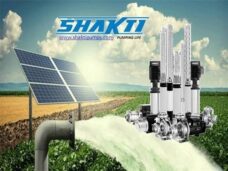Highlights :
- The move in Germany is in sync with similar moves in the rest of Europe to ramp up solar manufacturing .
- While competitiveness vis a vis Chinese or even Indian manufacturers seems difficult, the raft of incentives for net zero firms in the EU has made this possible in Europe,

With the EU pushing to create manufacturing capacities for clean energy technologies, Germany, an erstwhile pioneer in solar manufacturing till China swamped everyone, has joined the effort to bring back solar manufacturing to the continent.
The Federal Ministry of Economics and Climate Protection (BMWK) in Germany, analogous to India’s MNRE, has launched a request for expressions of interest (EoI) to recharge the country’s solar PV manufacturing supply chain. The move follows the generous incentives offered in the EU green deal, much like the Inflation Reduction act in the US or even India’s Solar PLI scheme that expects to add almost 50 GW of domestic manufacturing capacity by 2026.

The target in Germany is to build a 10GW of solar PV manufacturing across the value chain – i.e. from polysilicon to wafers to cells and modules – per year, with an annual capacity of at least 2GW for modules. That figure will take care of domestic requirements in Germany significantly. With a last date set for August 15 to apply, it is clear that the country hopes to move ahead quickly to start the process of approvals and breaking ground on new plants.
Open to domestic as well as global firms already in business, the EOI should attract strong attention, considering the size of the broader European market, where over 8 countries today are 1 GW plus markets.
The BMWK EOI asks for module efficiency higher than 24%, and many other conditions that would be considered very tough to meet in say, India. These include use of antimony-free solar glass–Proof of reducing the use of lead/bismuth, goal: as lead-free as possible, no replacement by bismuth of the PV modules/components to be manufactured–No use/generation of nitrogen oxides in PV cell production–No use of PFAS chemicals, no use of soldering processes in the PV module production, and importantly, to comply with new EU rules, recyclability design of the modules – with a degradation of the modules of less than 0.2% per year.
The need for proficiency in the whole supply chain also means the field of serious contenders might be limited, as Polysilicon, for instance, remains part of a small club of manufacturers even today.
Quoting the need for energy security in pushing for the initiative, Robert Habeck, Federal Economics and Climate Protection Minister said: “We need our own production capacities in Germany and Europe for central transformation technologies. This is not only a question of economic reason but also a question of economic security. The EU’s new subsidy framework offers opportunities for this, and we want to take advantage of them. We start with photovoltaics and want to support our industry in establishing permanent photovoltaic production in Germany by financially supporting lighthouse projects. This strengthens not only our technological sovereignty but also our energy-political sovereignty.”
With a legacy of key solar equipment makers such as polysilicon manufacturer Wacker Chemie or module maker Meyer Burger which has gone back to manufacturing itself after years of licensing out its manufacturing technology, the steady push across Europe for manufacturing will worry a lot of manufacturers. Be it Chinese or Indian firms that have found a ready market for exports in recent years, the long-term prognosis might be to make it in Europe or face a wall of resistance when the continent seeks to protect its fledgling industry this time.
Local trade bodies like the European Solar PV Industry Alliance (ESIA) are confident that Europe can meet its 30 GW manufacturing target by 2030 or earlier. The full document (in German) can be accessed here.






























